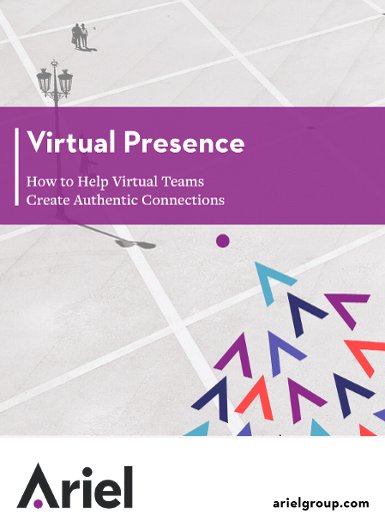Drop the Sales Pitch—Use Agile Storytelling Instead

When it comes to sales, the priority of creating trust and connection with clients and prospects endures. If your salespeople aren’t trusted advisors, they’re losing business—that’s the bottom line. Effective salespeople are able to move between initiating new ideas and responding to the needs of their client with agility and confidence.
So how can your sales teams build trust, demonstrate confidence, and be flexible and agile at the same time? Storytelling. Keep reading to find out how your sales teams can use this powerful tool to develop strong relationships, paint a clear picture of success for clients or prospects, and facilitate the client making an emotional connection to your brand or service.
Storytelling is a powerful tool for creating connection—neuroscience proves it!
When humans listen to a story, the same areas of both the speaker’s and the lightener’s brain “light up”—even though one is producing information and the other is receiving it. This creates coherence and ensures that you and your listener are on the same page. Furthermore, when humans are listening to engaging stories, our bodies release a neurochemical called oxytocin that’s associated with connectedness and trust. This boost in trust and empathy allows sales people to build stronger relationships with clients and prospects—a crucial aspect of sales.
How can you leverage storytelling while staying true to the in-the-moment dialogue?
Storytelling must always remain in service of the conversation of the client, so it can’t come across as forced, over-rehearsed, or even worse, loaded with self-interest. The moment a client perceives a story as lacking relevance or scripted, the connection in the moment is lost.
To avoid the scripted sound, use agile storytelling. It’s a type of storytelling that’s responsive and connected to what you are hearing in the moment.
Agile storytelling is about being able to develop a set of storytelling skills, techniques, and approaches that can be applied, in the moment, to any example that might be relevant to the client. It’s about having a library of possible stories ready to go in your mind, rather than just pulling out the same one or two over and over and trying to make them fit into every context. With a library of stories that reflect the variety of client needs, challenges, industries, etc., salespeople are then curating stories in the moment that meet the client’s needs and mindfully contextualizing the stories to the unique situation, context, and client.
Remember that sales isn’t about “pitching” anymore—it’s about listening deeply and authentically to build a relationship with the client and to offer (or create) a solution for them that meets their needs. This is where storytelling fits in through so many channels. Check out our new program or contact us to learn more today.

